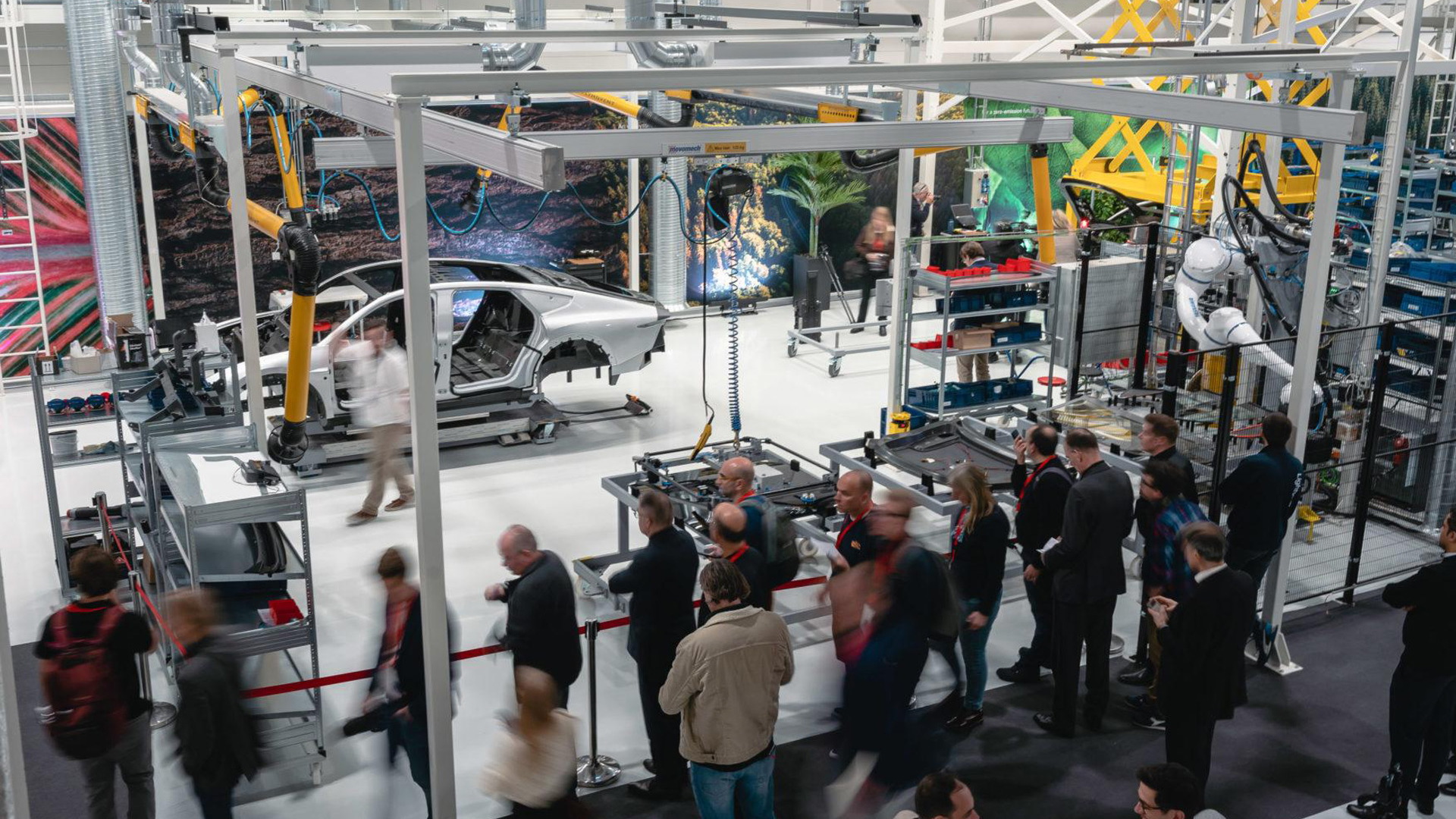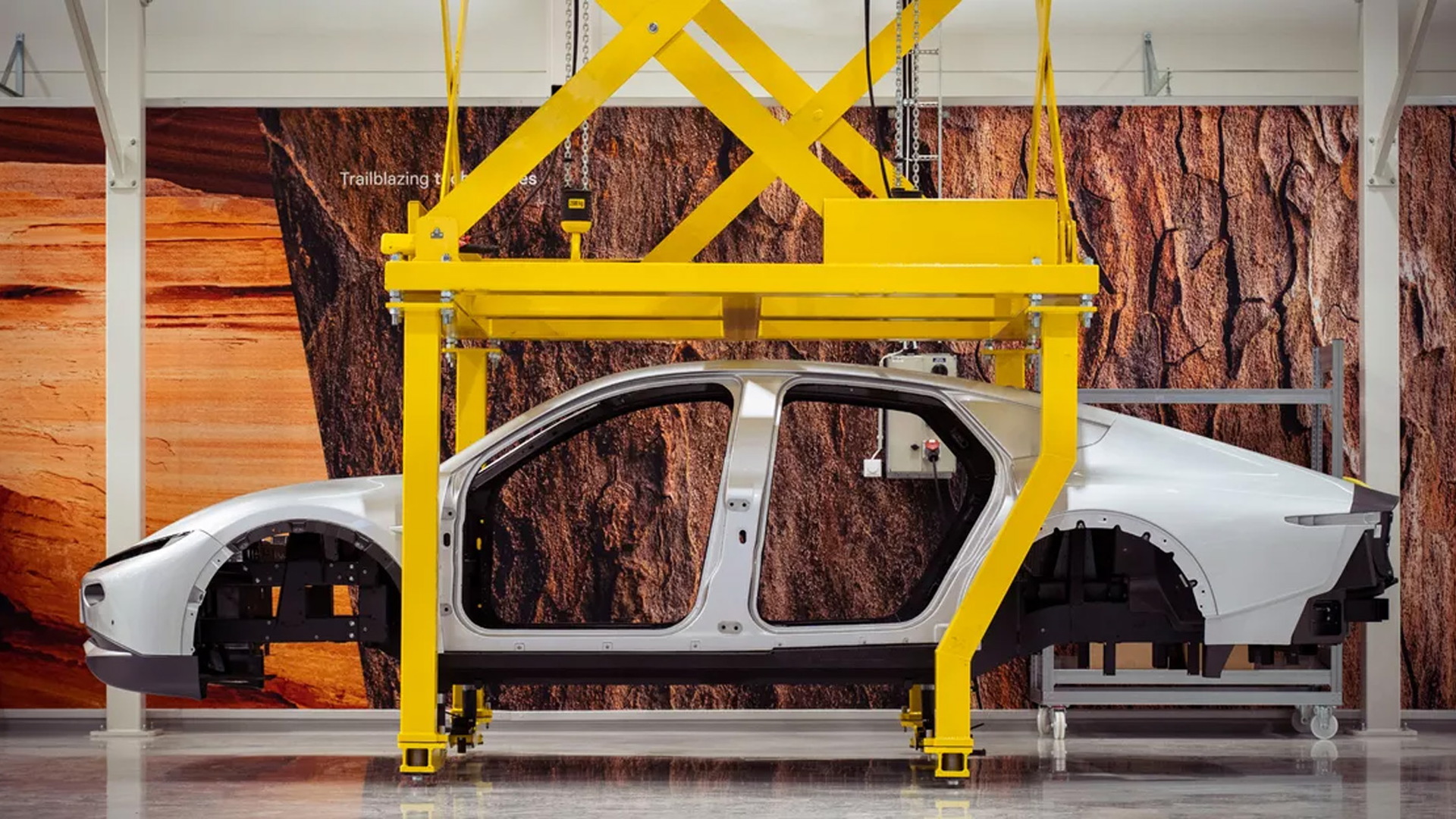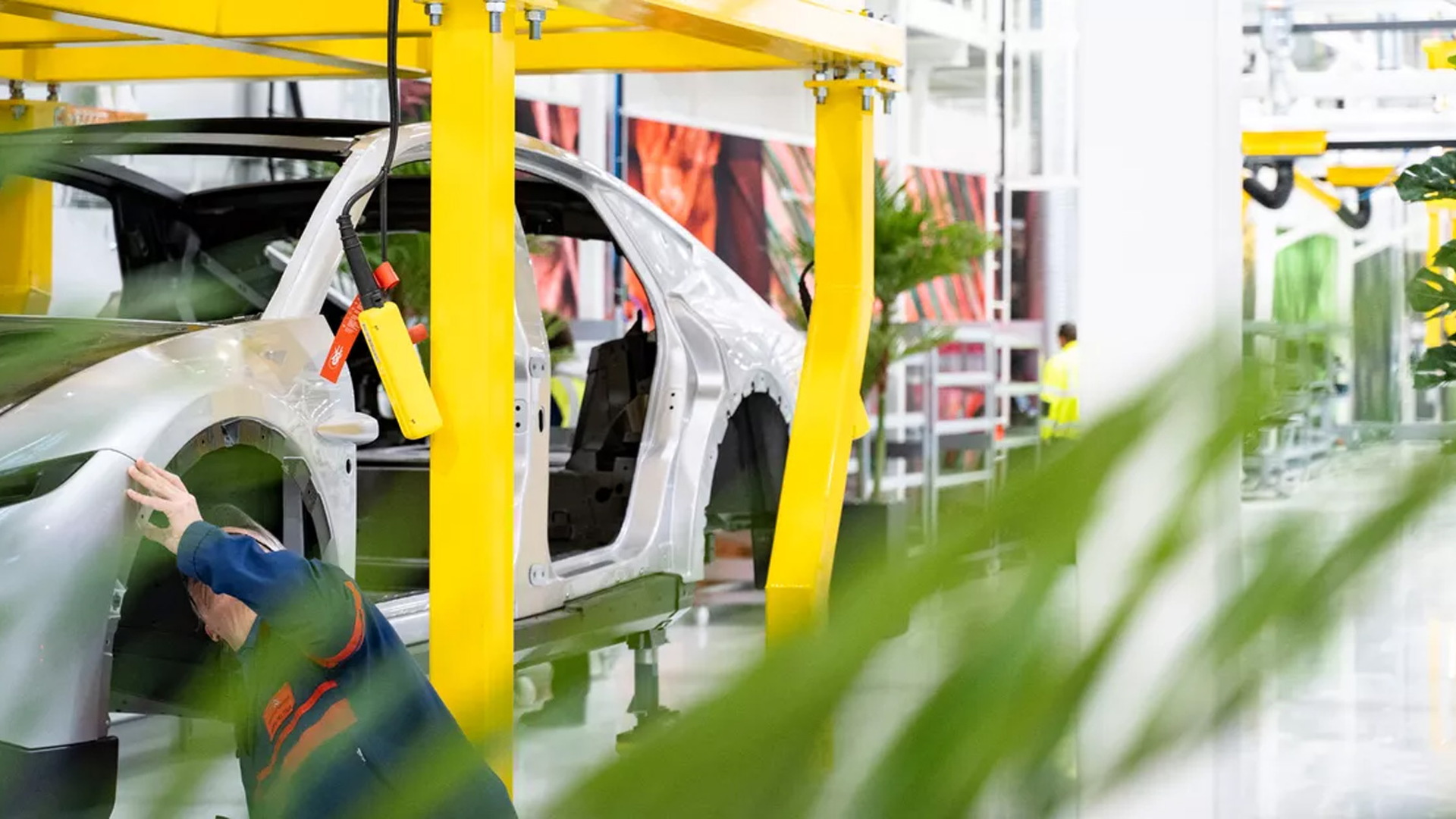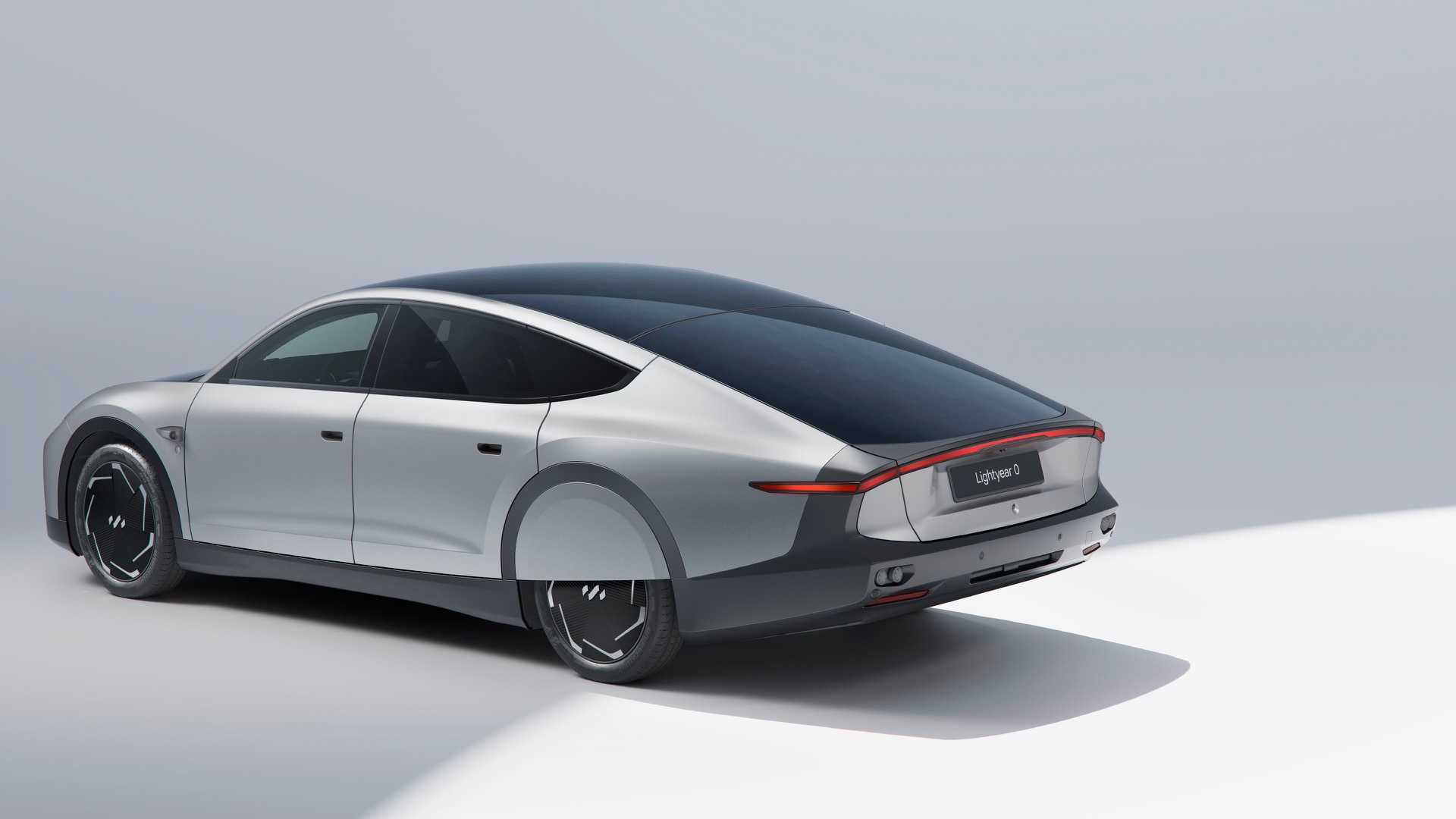In 2019, Dutch EV startup Lightyear revealed a concept for a sleek hatchback with in-wheel motors and solar panels spanning the hood and roof. On Wednesday, production finally got underway at a plant in Uusikaupunki, Finland.
The new EV is called the Lightyear 0, and its production is being handled by Valmet, the contract manufacturer that at one time built the Fisker Karma extended-range EV. Valmet is also contracted to build the Sono Sion, another EV that features solar panels.
The Lightyear 0 is also an extended-range EV, in a way. There's roughly 53 square feet of solar panels lining the hood and roof, and with sufficient access to sunlight they can charge at a rate of 1.05 kw, or enough to add 6.2 miles of range in an hour, according to Lightyear.
It means that with a full charge of the battery, a Lightyear 0 commuter car could potentially drive for months without needing charging, depending on the length of the commute and access to sunlight.
The Lightyear 0 features a 60-kwh battery pack that will deliver a Lightyear-estimated range of 388 miles on the WLTP test cycle used outside the U.S. This should still result in close to 300 miles on the stricter cycle used by the EPA.
The key to such high range with such a small battery is efficiency. In addition to having a drag coefficient of just 0.17, which is a record for a production car, the Lightyear 0 features efficient motors, inverters, and tires. The car has a claimed efficiency rate of 10.5 kwh per 62 miles, which approaches the efficiency of the Mercedes-Benz Vision EQXX concept car that used 8.7 kwh per 62 miles during a recent real-world test.
Going with in-wheel motors meant Lightyear could save weight and space by eliminating things like transmissions and driveshafts. The car weighs approximately 3,472 pounds, which is relatively light for a five-seat EV, and it rides on specially designed skinny tires developed by Bridgestone.
The Lightyear 0 is currently available exclusively in Europe where it starts at 250,000 euros (approximately $262,100). Lightyear hasn't said whether it will be available in the U.S.
“Starting production of the Lightyear 0, the first solar car, brings us a big step closer to our mission of clean mobility for everyone, everywhere,” Lex Hoefsloot, Lightyear’s CEO and co-founder, said in a statement.
Not everyone will be able to afford an EV costing six figures, but Lightyear is already working on a model the company says will have an affordable price. It will be called the Lightyear 2, and is expected to arrive in 2025.






